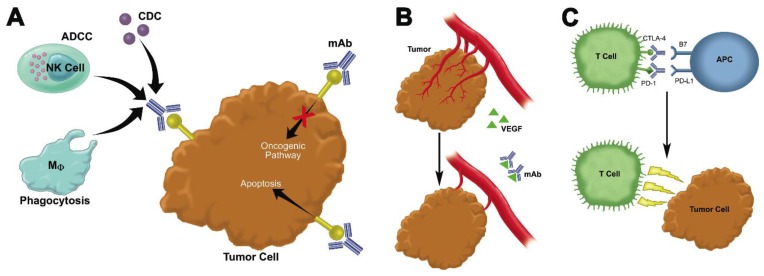Figure 1.
Mechanisms of targeting tumors using monoclonal antibodies (A) The first class of mAbs binds directly to tumor cells and induces apoptosis or antagonizes oncogenic pathways. The Fc region of the mAb may also induce antibody-dependent cellular cytotoxicity (ADCC), complement-dependent cytotoxicity (CDC) or phagocytosis of the tumor cell. (B) The second class of mAbs blocks growth promoting pathways in the stroma. In the example shown here, an anti-VEGF mAb acts to prevent angiogenesis. (C) The third class of mAbs, immune checkpoint inhibitors, blocks the interaction of inhibitory receptors expressed on activated T cells (CTLA-4, PD-1) with ligands on antigen presenting cells (B7, PD-L1) or tumor cells (PD-L1 or PD-L2). This therapy prevents the attenuation of the T cell response and allows activated T cells to kill tumor cells.

